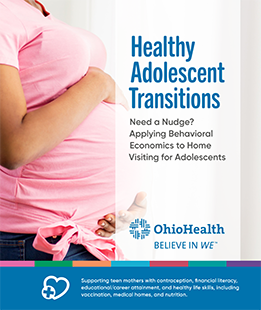Contraception
The BE strategies of convenience and salience are applied during the contraceptive counseling portion of the HAT program. This content area focuses on educating adolescents about a wide range of contraceptive options, including abstinence. This portion of the program is delivered only during the prenatal period for two reasons. First, this timing allowed the HAT intervention to be distinct from alternative approaches that have often provided contraceptive education during the postpartum period. Second, educating adolescents about the option for immediate postpartum placement of long-acting reversible contraception (IUDs or implants) was a focus of the HAT intervention.
Obtaining long-acting reversible contraception during the labor and delivery stay makes the desired behavior as easy as possible by not requiring a postpartum visit for the most effective forms of birth control. Furthermore, long-acting reversible contraception offers continual protection against unplanned pregnancy for 3 to 10 years after a single procedure. In contrast, other forms of birth control (e.g., pills, Depo-Provera shots) require recipients to engage in more frequent (e.g., daily, quarterly) contraceptive behaviors.
A HAT nurse assists the participant in the creation of a birth control plan. That plan is written on a sheet that states which birth control option the adolescent has selected for use after delivery. The HAT nurse encourages participants to place this sheet in their hospital bag beside the infant’s newborn picture outfit to provide a convenient reminder during the labor and delivery stay. In addition, the HAT nurse prepares interested adolescents to request immediate postpartum placement of long-acting reversible contraception.
Session Resources
- Contraception LARC Worksheet
- Contraception Fidelity Checklist for Nurse/Social Worker
